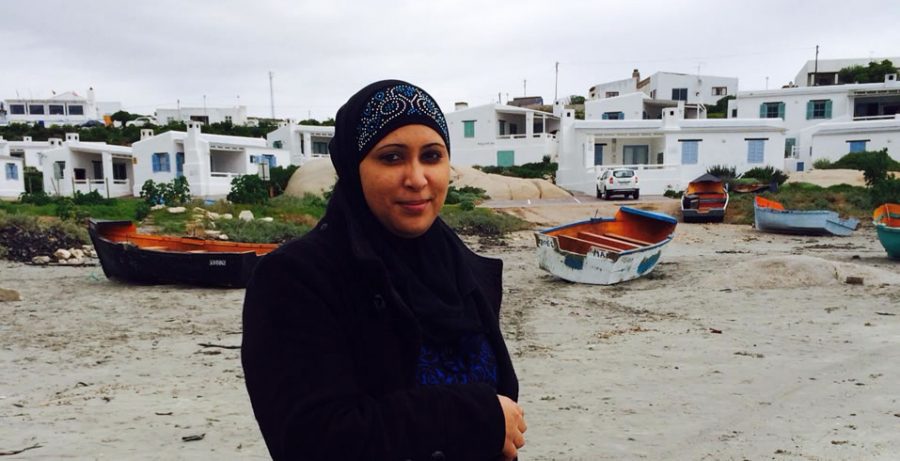As we mark Women’s Month, one woman has made history, by becoming the first female within Transnet National Ports Authority to hold an Open Licence to guide vessels of up to 300 000 deadweight tonnage into the Saldanha Port. Marine pilot, Salmaa Vincent was able to apply her newly acquired Open Licence certification to guide a 350 metre long vessel into the deepest port in South Africa and now handles the biggest vessels of the country’s ports.
Open Licence certification is one of the most coveted qualifications in the field and permits qualified marine pilots to guide ships of any type and size in and out of our ports, from the very smallest vessels to the gigantic super tankers and container ships. While marine pilots do not take over the ship, Vincent says they act as advisors to the captain of the ship and dock them in the port.
Of her first experience Vincent said: “It was nerve wracking at first but this was soon overtaken by exhilaration and excitement at my ability. Throughout the experience I concentrated and exercised caution to ensure that I was successful.”
The wife and mother of a 17-month-old daughter, says despite loving her job, she initially wanted to enter the field of marine engineering.
“I did job-shadowing and went to Transnet National Port Authorities, they have Take a Girl Child to Work Day, so I went. When I went into the engine room, I thought this is not want I want to do. [But] when I saw deck I thought this is interesting, my career started from there,” she told VOC Breakfast Beat on Monday.
Working as a pilot for seven years in the port of Saladanha, Vincent is one of three open licence pilots in the port.
Vincent, 30, received a bursary from Transnet National Ports Authority in 2005 which allowed her to pursue one year of Maritime Studies at Cape Peninsula University of Technology, followed by 18 months at sea with Safmarine (now Maersk). In 2008, she went on to pass her oral exam with the South African Maritime Safety Authority (SAMSA) and was issued with a Deck Officer certificate of competency.
Transnet then enrolled her in a tug master programme which she completed in January 2009. This was followed by oral exams at SAMSA before obtaining her Master Port Operations certificate. She then went on to do a year of marine pilot training. This included two weeks in Rotterdam doing practical ship handling. Upon her return, she completed simulation training in Durban at the Transnet Maritime School of Excellence. She finished her practical pilot training in Cape Town in September 2011 and qualified as a marine pilot, serving first at the Port of Cape Town for three months before returning to the Port of Saldanha.
Since the Saldanha Port is the deepest port in the country, it is able to hold the largest vessels in the country, some ranging from 300 to 350 metres long with a depth of 20 metres.
“It’s very difficult to turn the ships in the port, so once you obtain this licence, it means that you can do those kind of ships, but providing you are comfortable, assertive, and that you know what you are doing.
“Senior open licence pilots pass you out after you have done a couple of those vessels.”
Given the fact that her industry is dominated by males, Vincent notes that more females are entering the field; a field she says she is passionate about.
As requirements for marine pilots, Vincent explains that interested students will be required to complete one year of marine school, one year at sea and upon return, an oral examination. After which you become a tug master.
“They have a new programme that you follow, where for about 18 months or two years, you are on the tugs and then from there you start you pilot training, which the port will select a certain person.”
“Then you go to the port of Durban, we have a school there, the Port of Excellence. Then from there you do theory. And then in November and December they send you to Rotterdam where you do physical ship handling.”
Rotterdam captains pass the students, who then return to South Africa where students undergo practical’s in port of Durban and the port of Cape Town.
“After that you work for eight months as a pilot – if not more – then you pass out and then you work I the port of Cape Town or Durban for three months.”
Once the pilots are satisfied with the students’ progress, the individual is then sent to their respective home port.
Vincent asserts that the biggest contributing factor to her success was the assistance of her family and her belief in the Almighty. She encourages anyone interested in entering her field to remain firm in belief that anything is possible. VOC






 WhatsApp us
WhatsApp us 

